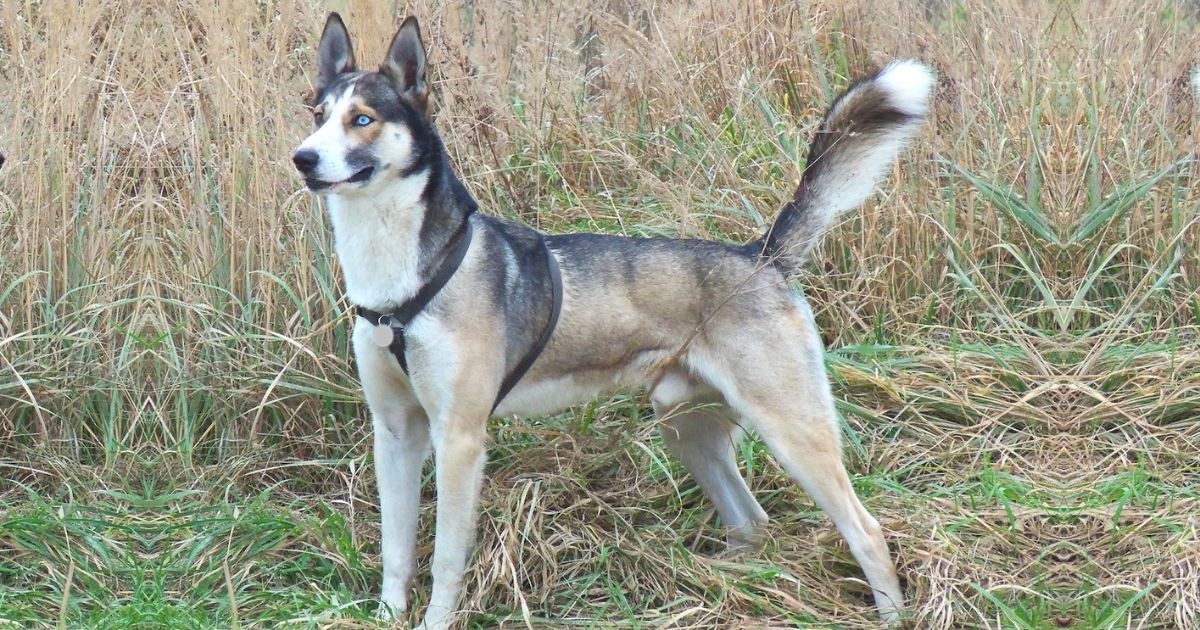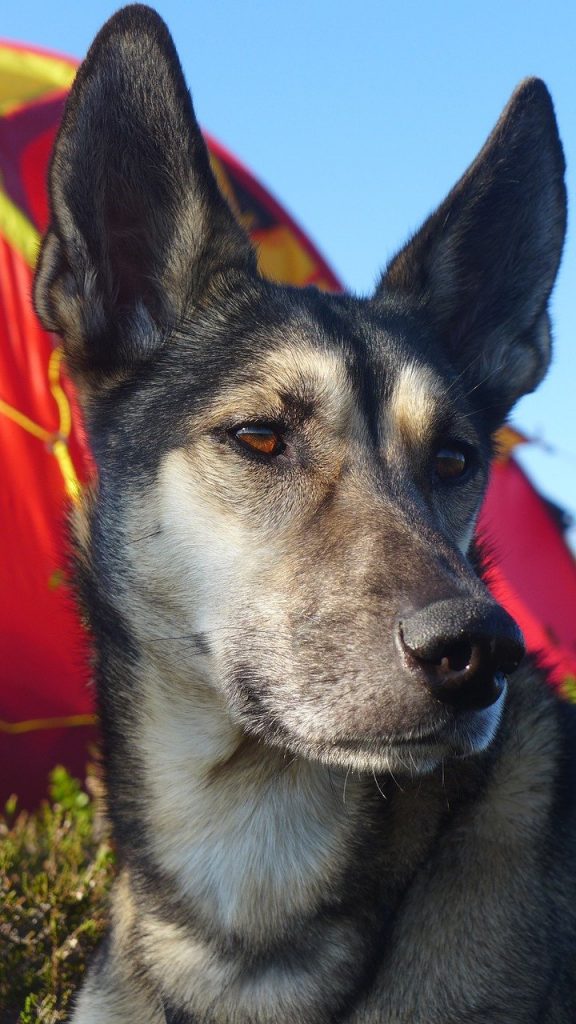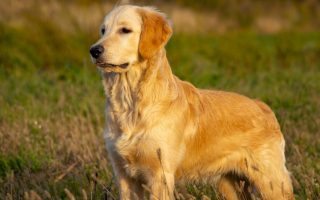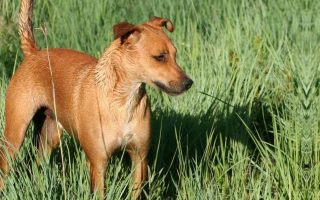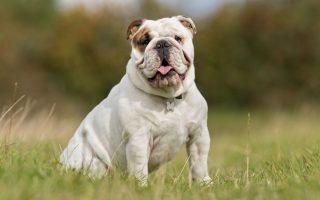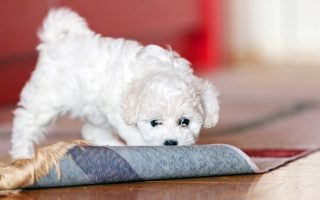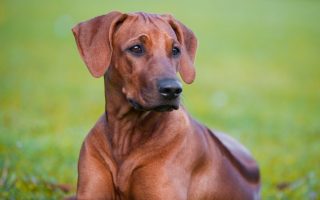The Alaskan Husky has the looks of a wolfdog, starting from the pointed ears.
Those who like the feral looks of wolfdogs but can’t handle their wildness find a good alternative in dogs like the Alaskan Husky.
With TV series like Game of Thrones making Wolfish dogs popular, Alaskan Huskies have grown in popularity.
Though not initially bred as pets, they’ve found their way into the hearts and homes of many.
In this Alaskan Husky facts and dog breed information, we take an in-depth look at the interesting facts, characteristics, history, temperament, personalities, caring needs, and more.
There are so many extant dog breeds in our world today. Some are so similar, they could be twins. Others fall on opposite ends of the pole.
With such a wide stream of choices, it becomes tough to know what breed to choose.
Being a pet parent is also not easy, especially in our fast-paced world where we get out of bed by 6 and get back home in the evening.
We live in different environments, too, a factor that influences your pet choice.
You wouldn’t want to get an outdoor pet when you live in an apartment. Other factors like your personality, age, and the nature of your family come into play as well.
The best solution to the struggle of owning a pet is to know what your preferred dog breed requires before making a decision. Once you know this, the task gets easier.
Key Alaskan Husky Facts & Information
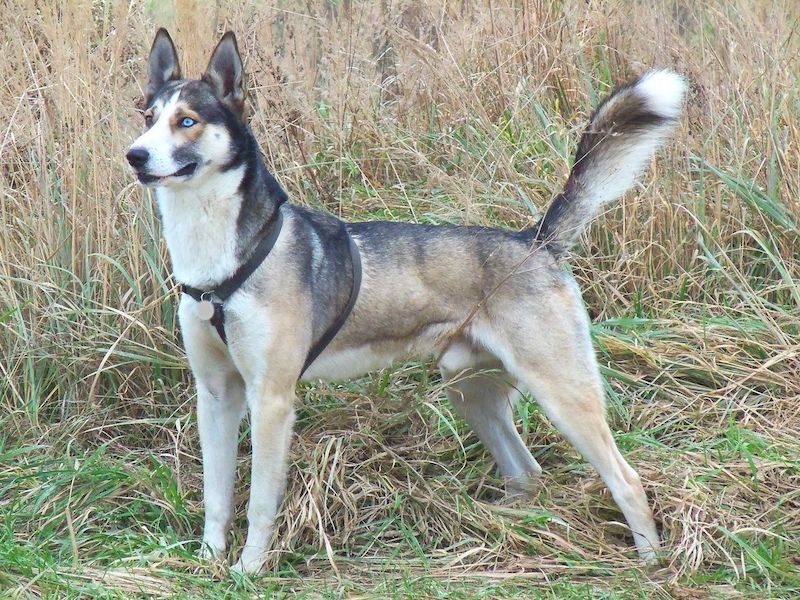
| Dog Breed Group | Working Group |
| Breed Type | Crossbreed |
| Height | 20 to 24 inches |
| Weight | 35 to 60 pounds |
| Coat | Short, Medium |
| Color(s) | Black, Grey, White, Orange |
| Life Expectancy | 10 – 15 years |
| Temperament | Energetic, alert, powerful, protective |
| Origin | United States |
| Bred For | Sledding |
| Nickname(s) /Other Name(s) | Husky |
| Recognized by the AKC | No |
| Recognized by the UKC | No |
Alaskan Husky Characteristics
| Characteristics | Rating |
|---|---|
| Adaptability | 4/5 |
| Friendliness | 4/5 |
| Child Friendly | 3/5 |
| Pet Friendly | 2/5 |
| General Health | 3/5 |
| Grooming Needs | 3/5 |
| Trainability | 3/5 |
| Intelligence | 3/5 |
| Playfulness | 4/5 |
| Exercise Needs | 4/5 |
| Energy Level | 4/5 |
| Tendency to Bark | 4/5 |
| Tendency to Drool | 1/5 |
| Tendency to Snore | 1/5 |
| Tendency to Dig | 4/5 |
Interesting facts about Alaskan Husky Dog Breed
Fact #1: Alaskan Huskies are similar to Siberian Huskies.
Alaskan Huskies and Siberian Huskies share so many striking resemblances, they are often thought to be the same.
In fact, someone who doesn’t know much about dogs will assume they are the same breed.
However, they have their differences.
Alaskan Huskies are slimmer and have different eye colors.
The Siberian Husky is also a recognized purebred by the American Kennel Club (AKC) and other popular Kennel Clubs while his Alaskan brother is a crossbreed and unrecognized.
Fact #2: They are highly energetic
The energy level of the Alaskan Husky is so high, he is termed the Siberian Husky on steroids.
This energy enabled them to go about their initial occupation of sledding across a long distance.
Their energy level makes them a handful today. Make sure they use it up exercising or you’d have a hyper case in your hands.
Fact #3: They were bred to be sled dogs
Sled dogs were trained to pull sleds in harnesses. They were used often in cold climates, that’s why many of them cope with the winter.
The Alaskan Husky was one of such dogs. They pulled sled over long distances, way before they became household companions.
Fact #4: They are known for their speed
Alaskan Huskies were bred to be a more energetic version of the Siberian Husky.
This energy makes them fast—a quality that made them excellent sled dogs.
They were often used in sled races thanks to their speed.
Fact #5: Technically speaking, Alaskan Husky is a type, not a breed
In its primary sense, the term ‘Alaskan Husky’ categorizes a good number of Huskies. The same controversy exists with other dog names like the Pit Bull.
There is a crossbreed of various fast dogs called the Alaskan Husky.
It is what we are focused on. Nevertheless, the Alaskan Husky is not recognized as a breed by any Kennel Club.
Alaskan Husky History, Origin & Mix
As the name implies, the Alaskan Husky hails from Alaska, United States. He was employed to pull sleds and participated in sled racing many times.
Far from being purebred, Alaskan Husky is the result of cross-breeding.
He combines the genes of dogs like the Siberian Husky, the Inuit Husky, the German Shepherd, and the Border Collie.
The Alaskan Husky isn’t known by his looks, but by his purpose.
His speed and energy made him a popular choice for sled racing. Not surprisingly, many Alaskan Huskies are found sled racing today.
In general, the term ‘Husky’ refers to sled dogs used in cold regions as a mode of transport. They were like horses pulling a chariot.
Their fur, sense of direction, and speed made them the best choices in this area.
Sled dogs were used to deliver messages and to race.
The word ‘husky’ was used first in the 19th century to refer to dogs trained by Inuit people.
It is a shortened form of the word ‘Huskimos,’ the way the English pronounced ‘Eskimo.’
These dogs share similar characteristics like:
- Athleticism
- Double coat
- Pointed ears and a Wolfish expression
- Shedding more during the summer
Different types of Huskies include the Siberian Husky, Labrador Husky, and, of course, the Alaskan Husky.
Though they were not bred to be household companions and are used mainly for competitions, Huskies are now good pets. The Alaskan Husky is no different.
Alaskan Husky Temperament & Intelligence
Alaskan Huskies’ speed and energy made them big-time working dogs and athletes.
Their endurance keeps them going at a point other dogs will give up.
Back then, they weren’t seen as pets. Even in modern times, many dog owners select them for competitions, not for companionship.
However, they now sit comfortably in the houses of many Americans.
Alaskan Huskies are not good watchdogs and guard dogs because they are friendly with strangers and are not barkers.
This is neither a good nor bad quality. It depends on what you want in a dog.
They like to be in a pack, so you should consider one if you want a house with multiple dogs.
Sociable to a core, they tend to not be aggressive towards other dogs but would rather welcome them to the pack.
They will cohabit with other pets too if raised with them.
However, they have a strong prey drive, so be wary about leaving them with cats and smaller pets.
There are other factors to take note of.
Because they are energetic, Alaskan Huskies don’t like being bored or they’d become destructive.
Also, while they don’t bark, they have a tendency to howl. They are adventurous, which fuels their digging and roaming habits.
Ensure that they stay in a fenced area and keep them on a leash when outside. If they run off, you won’t be able to catch them.
They are trainable but stubborn and have their own ideas. If you’re a new owner, you may find it tasking to train an Alaskan Husky.
It is better to go for a less stubborn breed for a first dog. Alaskan Huskies need a firm leader before they’d carry out any instruction.
They are also mischievous, a trait to be cautious of.
Is an Alaskan husky a good family dog?
An Alaskan Husky is social, playful, loving, and bonds well with family members. They are affectionate and friendly, even with strangers.
They’d jump on you to play, or come for a snuggle. Though they were initially bred to be workers, they have made their mark as family dogs.
As to whether the Alaskan Husky is good for you specifically, a lot of things should be considered.
They aren’t fit for new dog owners, busy people, or those who want a more ferocious dog for security.
If you do feel you are capable of handling an Alaskan Husky, you’d have a fun playmate that would make your days brighter.
Are Alaskan Huskies good with kids?
The Alaskan Husky is affectionate with every member of the family, including the kids. They are playful with children and are always ready for some games and fun.
They love to be around children and are not known to be aggressive.
However, you should consider their energy. Their hyperactive nature makes them unfit for a family with little kids as they may inadvertently knock the children down.
Around older kids, you should supervise every interaction. Children shouldn’t be left alone with dogs.
Also, teach your kids basic dog manners.
They should know the dos and don’ts of interacting with a dog.
This would not only make them play safe, it teaches them to treat animals well.
Are Alaskan huskies good with other dogs and pets?
The Alaskan Husky is a good choice for those who want many dogs.
He doesn’t enjoy solitude and has a pack mentality, so he would be welcoming of other dogs, especially if those dogs aren’t aggressive.
They are not territorial.
They also get along with other pets like cats when well trained. However, there’s their hunting instinct to be cautious of.
Make sure they understand your cat, mouse, or hamster isn’t prey.
Male vs Female Alaskan Husky
Should you go for a male or female Alaskan Husky?
There’s a lot of confusion in this area as both male and female dogs have good qualities, and getting one is a choice.
While some people prefer the female gender of any dog breed, others want the guys.
If you’re unsure which Alaskan Husky gender you want, perhaps the differences would help.
Note that the gender you pick should fit your lifestyle, environment, and family.
Gender differences amongst the Alaskan Husky—and Huskies in general—are subtle, but present.
To begin with, the male Alaskan Husky is larger than the female. Male Alaskan Huskies weigh up to 60 pounds, the females get up to 50.
Do you want a bigger or smaller Alaskan Husky? You know which to go for.
The differences seep into their personalities too.
While they both are friendly, affectionate, and loving, males tend to be friendlier and more attached to their owners. Females mature faster and are more reserved.
The third, obvious difference is in their genitals. While the male genitals protrude and are easily seen, it isn’t so for the females.
Caring for an Alaskan Husky
The needs of all living beings can be summarized with one word—care.
It is a part of nature, a concept and aspect of life we cannot exist without. Without care, even plants die.
Dogs need care as much as humans. As pet parents, they look up to you for their basic needs.
Unlike humans, they never become independent enough to take care of themselves without our help.
They can’t feed themselves, get a mortgage for a house or go jogging alone.
Granted, many dog breeds show independence in their thoughts and are intelligent enough to execute some tasks. However, you are responsible for them.
Alaskan Huskies are outdoor pets who thrive in a big yard with enough space to run around.
While they can manage indoors, it is not suitable for them because of their energetic nature. They are difficult to house-train, as well.
However, their love for the outdoors doesn’t mean they like solitude.
Alaskan Huskies do not enjoy being alone and are prone to be destructive if left without company for long.
Make enough time for them, or get a companion canine to be a pack member.
A typical Alaskan Husky is an independent dog with a mischievous streak and a penchant for troublemaking.
They tend to choose whether or not they’d obey you, and their answer would be no if you haven’t proven that you’re the leader of the pack.
This is a problem for first-timers or those who aren’t used to taking charge and being confident.
It is up to you to train them with firmness, patience, and experience.
Alaskan Husky Food and Diet
The first way to care for a dog is feeding. Like other living beings, dogs need to be refreshed.
Alaskan Huskies in particular are highly energetic, so they need enough nutrients to thrive.
It is unhealthy to feed a dog with whatever you choose without taking into account their nutritional needs and the value of each meal you give them.
There are nutrients your Alaskan Husky needs and there are some they should avoid.
To know how to feed your Alaskan Husky, start by observing their eating habit as puppies.
While we offer some tips on feeding an Alaskan Husky, bear in mind that individual differences matter.
No two Alaskan Husky is the same, especially as Alaskan Husky isn’t purebred.
Puppies need puppy food, they shouldn’t be given adult food as this would cause more harm than good.
Start by feeding them three times a day, then reduce to two meals per day as they mature.
An adult Alaskan Husky requires about 3 to 4 cups of dry food twice a day.
Their meal should contain nutrients like protein, minerals, water, healthy fat, and vitamins.
For their wellbeing, avoid feeding them, onions, milk, raw salmon, garlic, and grapes.
Generally speaking, Alaskan Huskies are not big eaters, so they are not prone to obesity. With enough exercise, they’d maintain their size.
However, you should be conscious of your pet’s weight, especially when they become seniors and less energetic.
Also Read: Bad Dog Foods to Avoid and Top Choices to Consider
Alaskan Husky Exercise
As a sledder and worker, the Alaskan Husky has a high energy level and a high level of exercise.
You need to be sure you can deal with a highly energetic dog before you consider getting an Alaskan Husky.
If your exercise regime consists of a simple walk and stretches, the Alaskan Husky will drain you.
They need at least an hour of intensive exercise to stop them from getting frustrated and agitated.
They are good for hikers, joggers, and anyone who likes intense activities.
Related:
Start exercising your Alaskan Husky as a puppy to build his stamina. However, don’t train him as you would an adult because he is still growing.
3 months is a good time to start exercising Alaskan Husky puppies.
A 15 minutes walk lays a good foundation for your puppy. Increase it by a few minutes as they grow older.
For example, as they get from 3 to 4 months, you can move from 15 to 20 minutes.
Besides walking, there are other activities you can use to exercise your puppy. The activities include digging, fetching balls, and frisbee toss.
The adult Alaskan Husky requires more than walks and frisbees, though.
For an hour exercise that would keep them satisfied, they need challenging activities.
Brisk walks, jogs, and hikes are some instances of activities the Alaskan Husky can partake in.
Playtime around a yard is good for them, too. The yard should be properly fenced as Alaskan Huskies are apt at escaping by jumping over fences or digging underneath. Also, while you’re outside, keep them on a leash. Be prudent with exercise when the weather is hot. Alaskan Huskies don’t do well with the heat.
Senior Alaskan dogs need exercise to avoid obesity and maintain good health.
Alaskan Huskies are trainable, but not with ease. They are not for the timid, the inexperienced, the negligent, or the laid-back owner.
While the Alaskan Husky tends to not be aggressive, without training he can develop those tendencies.
Training keeps a dog domesticated and ward off wild tendencies. You should not get a dog you cannot train. The world has enough problems as it is.
The first thing you must do with the Alaskan Husky is to make sure he knows you’re in charge.
Define and maintain your status as leader of the pack if you want respect from the Alaskan Husky.
Here are some tips to achieve this:
- Keep him behind and on a leash while outdoors.
- Make sure you eat first before serving him, not the other way round.
- Set rules and follow through. For example, give him attention at your whim, not when he wants to.
- Don’t sleep with your Alaskan Husky, even as a puppy. Give him his bedspace.
Establish your authority as early as possible. By 8 weeks, he is ready for training. The earlier, the better. Put your Alaskan Husky on obedience training, socialization and others.
The first obedience training you should get a puppy accustomed to is routine.
Set up a routine that your dog will learn. They should know mealtime, sleeping time, and others.
The next is teaching them some basic commands. ‘Sit’ is an example of a basic command a puppy can learn.
Socializing your Alaskan Husky will make them friendlier towards strangers and curb their hunting instinct if you have smaller prey.
You can start with a trip to the dog park once they are vaccinated.
Alaskan Husky Grooming Needs
Alaskan Huskies have a coat that’s easy to manage. If you are not that experienced in grooming or it isn’t something you enjoy, you won’t have a problem with this dog.
You also don’t have to spend money hiring a groomer.
Normally, Alaskan Huskies shed moderately. However, when the climate gets warm, their shedding rate increases.
This is because they let go of their undercoat, a natural way to adapt to the weather.
When this happens, brush them on a daily basis to get rid of old hair. Have a vacuum cleaner on standby to keep your environment free of fur.
Don’t bathe your Alaskan Husky too much as that causes more harm than good.
They don’t get dirty with ease, so you don’t have to worry about them developing a bad odor. Bathing should be done once a month with vet-approved items.
Brush the teeth daily or twice a week to maintain a healthy dentition.
Trim their nails before they get too long and make your dog uncomfortable. Take care of their ears with a cotton ball and a vet-approved ear cleaner.
While grooming, keep their health in mind. Look out for symptoms of infections, injuries, or illnesses. Some of the symptoms include:
- Sores
- Whimpering when you touch a part
- Unpleasant odor
- Red eyes
Start grooming your Alaskan Husky as a puppy to get him used to being touched.
Alaskan Husky Health Conditions
Alaskan Husky is a healthy breed with not many medical conditions attached to him.
With enough care, visits to the veterinarian will be scarce.
However, Alaskan Huskies fall ill too. There are some conditions you should have in mind, just in case—they include hip dysplasia, hypothyroidism, and cataract.
Hip dysplasia
Hip dysplasia in dogs is an inherited condition. It happens when the joint gets loose.
Symptoms include pain and abnormal movements. If a hyperactive dog like the Alaskan Husky is reluctant to move, know there is a problem.
You don’t have to deal with this illness if you show caution at the onset.
Go through the medical background of any puppy you wish to get and meet a qualified breeder when you want to purchase the puppy.
Hip dysplasia treatments include physical therapy, supplements, and weight reduction.
Hypothyroidism
Hypothyroidism is a medical condition that affects a dog’s metabolism. It is a deficiency of the thyroid that leads to hair loss, weight gain, weakness, among others.
While there is no known prevention of hypothyroidism, regular checkups at the vet help with early diagnosis.
Good canine care reduces your dog’s chances of suffering from this.
Sadly, there is no permanent cure for hypothyroidism.
However, with regular thyroid hormone replacement therapy, your dog will survive it.
Cataract
In dogs as with humans, cataract occurs when a cloudy ‘disk’ covers the lens and obstructs light. This is a common cause of blindness.
Cataracts are either hereditary or can develop as a result of diabetes.
While there is no guaranteed prevention of cataracts in a dog, early diagnosis will go a long way towards solving the problem.
The best treatment for cataracts is surgery.
Frequently Asked Questions
Is the Alaskan Husky right for you?
Alaskan Huskies are social, loving, and playful dogs who is right for you if you want an affectionate, friendly dog. However, they aren’t advisable for new dog owners who may find it overwhelming to train this stubborn set of dogs.
Someone who wants a guard dog or watchdog shouldn’t go for the Alaskan Husky. He is more likely to wag his tail than bark at a stranger.
What are Alaskan huskies known for?
Alaskan Huskies were bred to be sledders. Their speed made them good candidates for sled races. Most Huskies used for races are Alaskan Huskies.
Though they are now pets, they are still known for their athleticism.
How big do Alaskan Husky get?
Alaskan Huskies grow to be quite big in size and are larger than their counterpart, the Siberian Husky. They weigh 35 to 60 pounds and grow up to 24 inches.
Do Alaskan Huskies like to cuddle?
Alaskan Huskies are sweet, friendly, and affectionate dogs who love being close to their owners. Though they are hyperactive, they also love to cuddle.
Is it hard to care for/train Alaskan Husky?
Alaskan Huskies have a coat that hardly gets dirty and doesn’t need too much maintenance except in summer when they shed much.
They can be tough to train, but overall they are not hard to take care of.
How long do Alaskan huskies live for?
Alaskan Huskies have the potential to live long. Their life span falls between 10 to 15 years.
How much do Alaskan Huskies cost?
Alaskan Huskies, like other Huskies, are costly. If you want to get a puppy from a racing line, it costs up to $15,000.
However, if it is a puppy with no special pedigree, it costs about $1,000 to $1,500.
Do Alaskan Huskies shed?
Alaskan Huskies are moderate shedders and don’t shed during winter.
However, when the weather is hot, they lose their undercoat, leading them to shed a lot of furs.
Final Thoughts
Hopefully, you found this article on Alaskan Husky facts and dog breed information helpful. By now, you should be able to decide whether this husky is the right canine for you or your household.
The Alaskan Husky is a great companion and household pet for those who don’t mind the challenge of training him.
He is low maintenance, healthy, playful, loving, and affectionate. There’s not more you could possibly want from a pet.
If you do decide to get an Alaskan Husky, consider adopting one from rescue shelters. Not only is it cheaper, but you also get to save an abandoned dog

